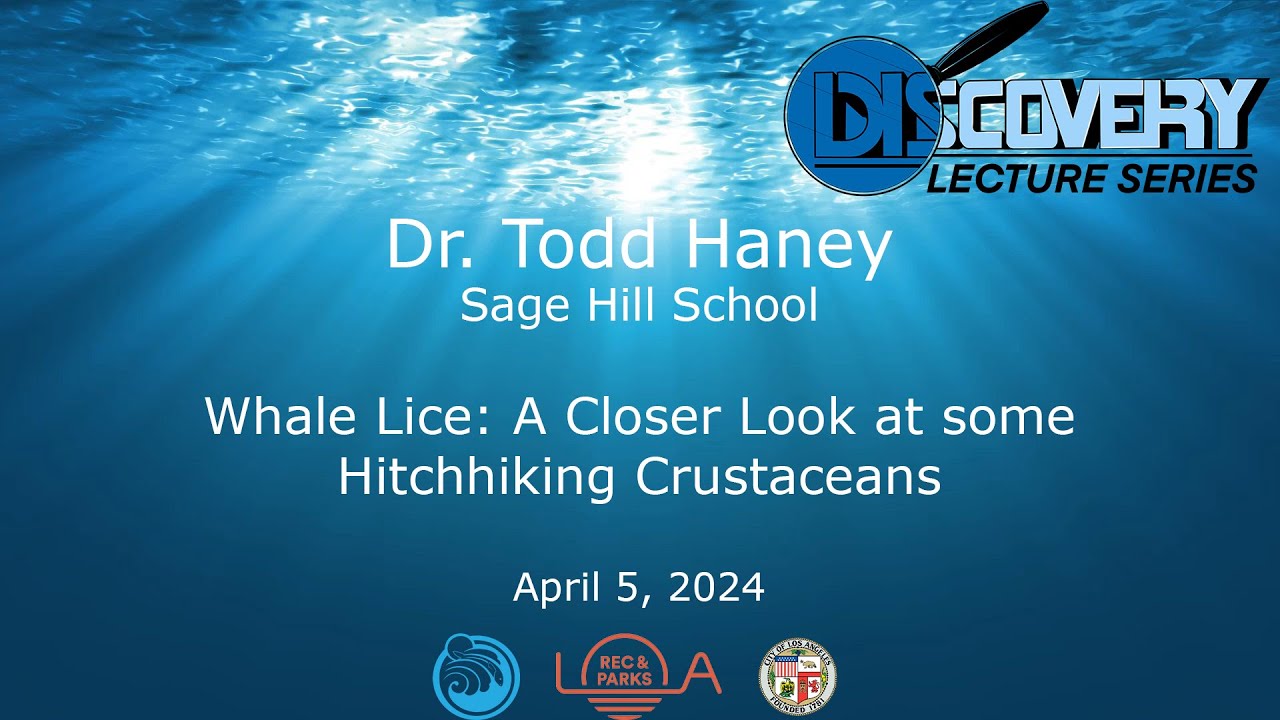– Exploring the fascinating life cycle of whale lice and their relationship with their hosts
– Investigating the role of whale lice in marine ecosystems and their significance for wildlife conservation
– The challenge of studying whale lice and the innovative methods researchers use
– Insights from the Discovery Lecture Series: Whale Lice – A Closer Look at some Hitchhiking Crustaceans and its video description into the importance of these organisms
Whale lice, often overlooked and understudied, are small crustaceans that have carved a niche for themselves by living off the skin and blood of some of the most gigantic mammals on our planet. Though seemingly straightforward, this symbiotic relationship plays a critical role in the health of marine ecosystems and presents unique challenges and opportunities for wildlife conservation and zoo management. The Discovery Lecture Series: Whale Lice – A Closer Look at some Hitchhiking Crustaceans and its video description provides a comprehensive overview, drawing attention to the intriguing dynamics of these crustaceans and their hosts.
Whale lice belong to Cyamidae, a parasitic crustaceans exclusively found on marine mammals, particularly whales. Their life cycle is closely intertwined with that of their hosts, with each species of whale lice adapted to live on specific whale species. This intimate relationship starts from the moment these crustaceans attach to the skin of the whales, where they feed, mate, and give birth to live young. The intricacies of their life cycle include remarkable adaptations that allow them to navigate the vast and sometimes tumultuous environments of their hosts’ bodies.
The video description of the Discovery Lecture Series highlights the biological and ecological aspects of whale lice and the symbiotic relationships that underscore the balance within marine ecosystems. By feeding on the dead skin and wounds of their hosts, these crustaceans help maintain the health of marine mammals, much like terrestrial grooming relationships found in several land mammal species. This aspect of whale lice’s existence underscores their significance in marine health and ecosystem dynamics.
Studying whale lice presents a set of challenges that researchers in zoology and marine biology face. The difficulty lies in accessing these creatures, as they reside in creatures that often inhabit depths and regions of the ocean that are not easily reachable by humans. Furthermore, the small size of whale lice and their specialized lifestyle means that scientists must use innovative methods and technologies, such as remotely operated vehicles and advanced microscopy techniques, to observe and collect data on these remarkable crustaceans.
The insights from the Discovery Lecture Series are invaluable for anyone interested in wildlife conservation and zoo management. Understanding the relationships between whale lice and their host whales can inform practices around the care and conservation of marine mammals in captivity and the wild. For instance, learning about the specific conditions that favor the health and reproduction of whale lice can indicate their hosts’ well-being. This serves a dual purpose of aiding in monitoring whale populations and ensuring the environments they inhabit, whether in the wild or in captivity, are conducive to their health and conservation.
In essence, the Discovery Lecture Series: Whale Lice – A Closer Look at some Hitchhiking Crustaceans and its video description sheds light on the crucial yet often ignored creatures of our oceans. Highlighting their life cycles, ecological roles, and the challenges and innovations in their study underscores the importance of these organisms in marine biodiversity, health, and conservation efforts. The series serves as a call to broaden our horizons, to appreciate the smaller, less visible players in our ecosystems, and to recognize their significance in maintaining the delicate balance of our natural world. As we continue to explore and understand the lives of creatures like whale lice, we step closer to achieving more effective conservation strategies and ensuring the health and sustainability of our planet’s vast and varied ecosystems.
*****
Source Description
Crustaceans of the order Amphipoda are ubiquitous in the marine realm, and include some species that occur in freshwater and terrestrial environments. With more than 6,000 named species, the alpha-diversity of this one crustacean lineage exceeds that of the mammals. Among the amphipods, members of the family Cyamidae have a particularly interesting ecology; they live in obligate symbiotic associations with whales, dolphins, and porpoises. Given their particular niche, cyamids are more commonly referred to as whale-lice. More than two dozen species of whale-lice have been described, each of which lives exclusively on the surface of one or more cetacean hosts. Whale-lice exhibit direct development; that is, their life history includes no larval or free-living stage. Not surprisingly, these animals then exhibit a high degree of host-fidelity. Initial studies of the group were simple descriptions of specimens that had been collected during commercial and sustenance harvests of the hosts.
Additional material is available for study from targeted collections and from strandings. The cyamids have been referred to as parasitic amphipods. However, the nature of their association with cetaceans remains poorly understood. The current state of knowledge of the ecology of the whale-lice is shared, as well as a detailed review of their unique morphology and what such evidence suggests about cyamid phylogeny. Additionally, patterns of relationships among the whale-lice are compared to current phylogenetic hypotheses for their cetacean hosts.
Dr. Todd Haney began his studies of marine invertebrates as an undergraduate at Northern Arizona University, where regular trips for fieldwork in the northern Sea of Cortez fostered his interest in the diversity of Crustacea. He completed a phylogenetic analysis of the whale-lice (family Cyamidae) for a master’s degree in marine science at the University of Charleston, South Carolina, and then continued in crustacean systematics for his doctoral studies at the University of California, Los Angeles. Currently, Dr. Haney is an instructor of life and environmental sciences at Sage Hill School, an independent school in Newport Coast, California, where he has been teaching since 2005.


